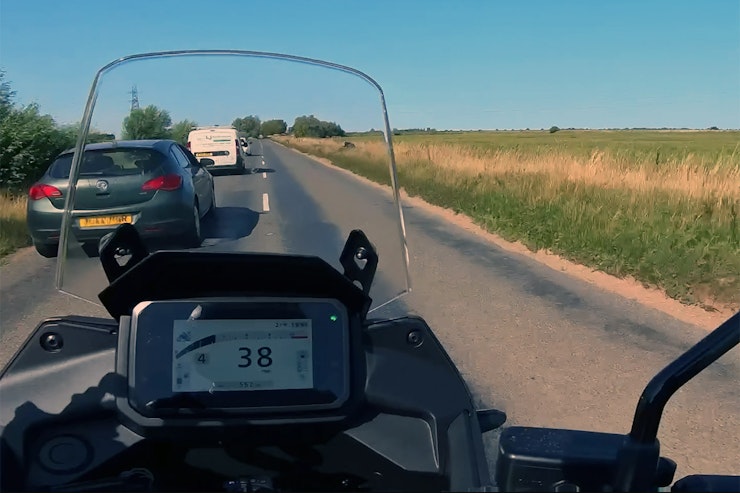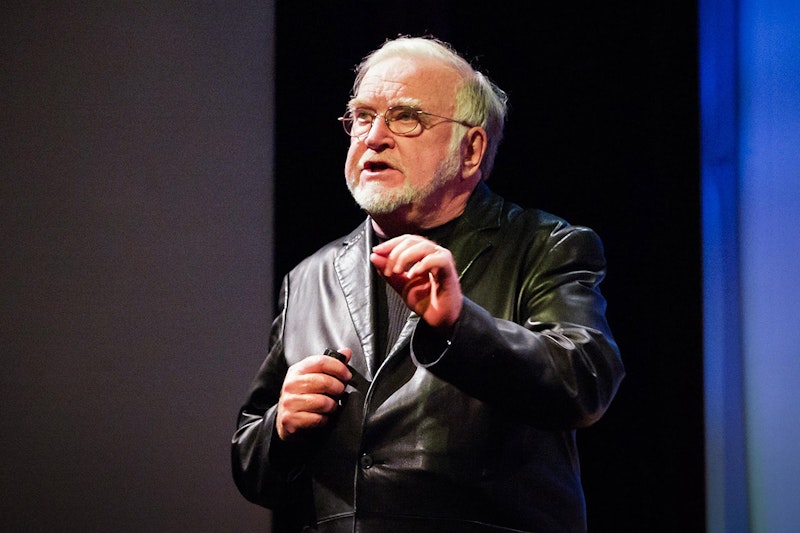Better Riding: transform your riding from functional to phenomenal
By Michael Mann
BikeSocial Managing Editor
14.10.2025
Flow: The Neuroscience of Better Motorbike Riding
Motorbike riding is more than just a skill—it’s an art, a science, and for many, a lifelong pursuit of mastery. In the latest episode our Better Riding series, MotorbikeCoach.com’s Mark McVeigh joins me to dive deep into the concept of ‘flow’ - a psychological state that can transform your riding experience from functional to phenomenal.
Whether you’re a beginner with just 20 hours under your belt or a seasoned rider with decades of experience, understanding and applying the principles of flow can elevate your confidence, safety, and enjoyment on two wheels.
‘The Father of Flow’, Mihaly Csíkszentmihályi
What Is Flow?
Flow is a psychological term coined by Hungarian-American psychologist, Mihaly Csíkszentmihályi, describing a state of optimal performance where actions feel effortless, focus is intense, and the rider is fully immersed in the moment. We’ve often heard this state referred to as being ‘in the zone’, mainly in conjunction with athletes as they prepare for a race, a jump, when being judged on skill, or even combat. Yet it can also be used when riding.
Mark McVeigh, an ex-MotoGP engineer and founder of MotoDNA rider training technology, explains that flow on a motorcycle is achieved when the challenge of a task is perfectly balanced with the rider’s skill level. This balance removes mental barriers and allows for smoother, more intuitive riding.
Read on for an overview of the accompanying video or watch it in detail here:
Better Riding: How to ride ‘in the zone’
Learn how neuroscience, sports psychology, and data-driven coaching can help you ride smarter, safer, and with more confidence.
Brought to you in partnership with Honda Motorcycles UK, this Better Riding series is a collection of self-help videos and written guides packed with practical tips, expert advice, and simple yet effective exercises. Designed for riders of all levels, it aims to boost confidence, improve machine control, and complement traditional post-test training. Because when your skills improve, so does the fun.
The Science Behind Flow
Flow isn’t just a feel-good buzzword - it’s backed by neuroscience and sports psychology. Studies show that athletes who engage in psychological interventions like mindfulness, visualisation, and pre-performance routines experience enhanced flow and improved performance.
McVeigh’s coaching method incorporates these principles, using a ‘6% rule’ to stretch riders just beyond their current skill level. This incremental challenge helps riders grow without overwhelming them, creating the ideal conditions for flow.
Real-World Example: The Figure Eight Drill
One of the most effective training exercises for developing flow is the deceptively simple figure eight drill. Riders often struggle with stiffness and erratic movements when approaching corners or cones. McVeigh recounts a recent coaching session where a student lacked flow - charging down straights but freezing at turns.
The solution? Gradual, targeted improvement. By encouraging the rider to push just 5 - 6% beyond their comfort zone, the drill becomes a gateway to smoother machine control and mental clarity.
Glide around the corners with fluidity and confidence
Flow in Action: Vision, Inputs, and Emotion
Flow manifests in several key areas of riding:
Vision: Riders in flow scan the road subconsciously, anticipating hazards and reading corners with precision.
Inputs: Throttle, brake, and steering become fluid and efficient - no jerky corrections or panic responses.
Emotion: Anxiety fades, replaced by calm confidence and mental stamina. Flow conserves mental energy, reducing fatigue.
Addiction (in a good way): Overcoming challenges releases dopamine and endorphins, making training enjoyable and ‘sticky.’
Teaching Flow: Can It Be Learned?
Absolutely, via structured training. The process begins with mastering basics - figure eights, corner avoidance, emergency braking - until they become automatic. McVeigh tells us about freeing up mental bandwidth for higher-level awareness and decision-making.
Key teaching strategies include:
Stretch Goals: Push yourself just beyond your current ability.
Visualisation: Picture confident, precise riding.
Routine Building: Use breathing cues and mental preparation.
Removing Flow Blockers: Address riding gear issues such as foggy visors, poor ergonomics like short gear levers, and distractions on the bike in your peripheral vision.
Aim to be braking like the instructor, not Tania.
Data-Driven Insights: Flow and Braking Performance
Using MotoDNA’s Digital Academy, McVeigh shares data from riders like Tania and Giuseppe to illustrate flow in braking. Tania’s initial braking G-force was just 0.4 compared to the coach’s 1.2 (see above graphic). Through incremental 5% improvements in brake pressure and application rate, Tania’s performance can be elevated over time.
Giuseppe, on the other hand, demonstrates steep brake application and high G-force, showing what flow looks like in a more advanced rider. These insights help tailor coaching to individual progress rates.
Lift your gaze to focus on the vanishing point
Flow on the Open Road
Flow isn’t limited to the training ground. On the road, it’s about road craft and mental presence. Vision plays a crucial role, riders should focus on the vanishing point, not fixate on the road surface. Lifting your gaze improves balance, coordination, and situational awareness.
The recommendation? Practice in stages: lift your vision 5%, repeat until intuitive, then lift again. This micro-learning approach builds flow gradually and sustainably.
Flow Is for Everyone
Flow isn’t mystical, it’s accessible. It’s a mental advantage rooted in science, and it’s available to every rider willing to challenge themselves. As McVeigh puts it, when skill, challenge, and presence merge, riding shifts from effort to art.
So next time you ride, don’t just pilot the bike. Invite flow in. When rhythm clicks, the magic happens.
Improvement is instinctive. Whether it’s a hobby, a passion, or your profession, we’re wired to want better. On a motorbike, that drive for progress can be the difference between a close call and a confident ride.
Spotting hazards, reacting instinctively, and staying composed—those moments prove the value of practice. Because riding better isn’t just about skill. It’s about safety. And every ride is a chance to sharpen both.
I’ll often commentate to myself when riding to remind myself of potential hazards and what my responses are to avoid possible danger. If you don’t already, why not try it?
Or, if you have an action camera (here’s a link to our reviews of the most recent 14 options), record your ride and review it afterwards looking at possible areas to improve. And if you’re not sure then ask us over at BikeClub or on our private Facebook Group.
Better Riding is supported by Honda Motorcycles UK as part of their commitment to rider safety and their goal of achieving zero traffic fatalities involving Honda mobility products by 2050.

